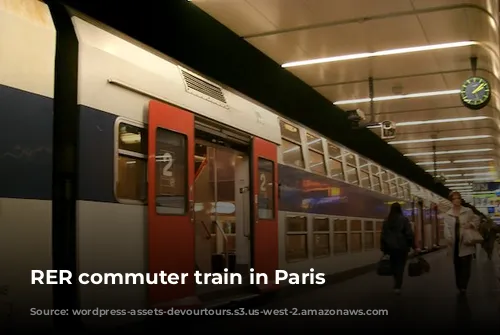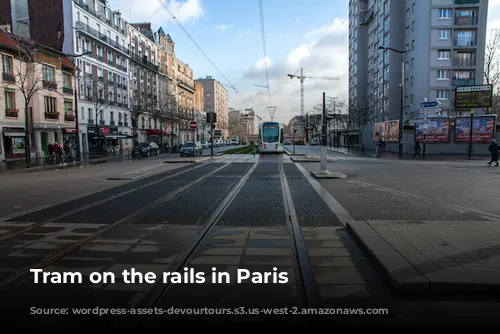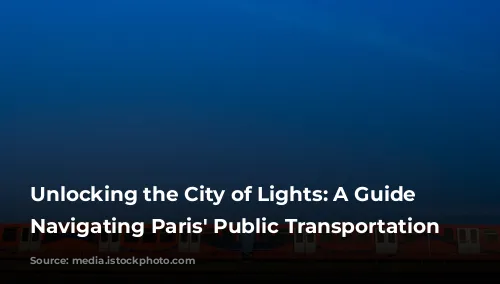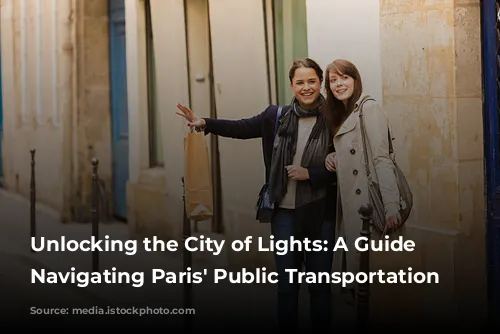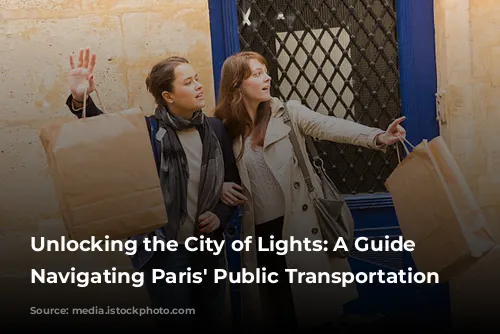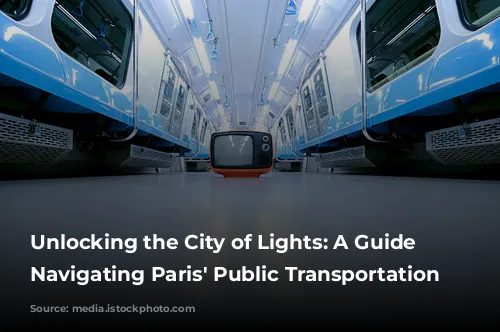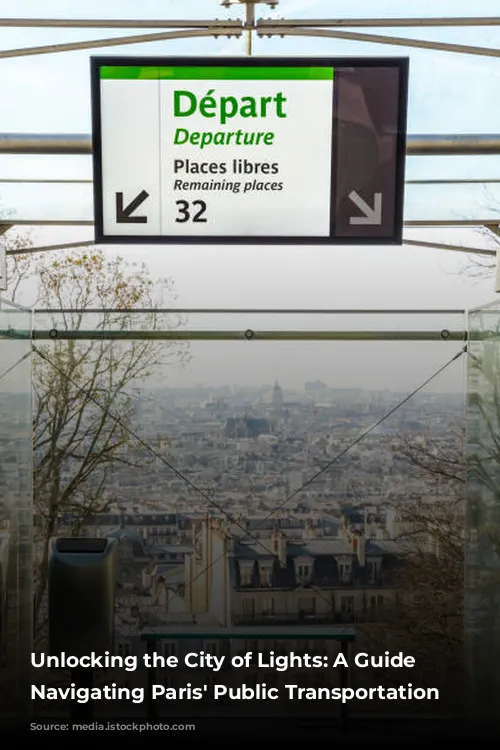Paris is a city bursting with life, and its public transportation system is your key to unlocking all its secrets. Whether you’re a seasoned traveler or a first-timer, knowing how to navigate the metro, buses, trams, and even bike-sharing can make your Parisian adventure smoother and more enjoyable. Let’s dive into the world of Parisian transportation and discover how to become a true local.
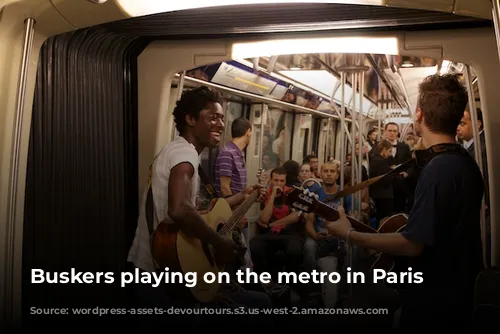
Mastering the Underground: Navigating Paris’ Metro
The Paris metro is a bustling labyrinth of tunnels and iconic Art Deco stations. It’s the quickest and most affordable way to get around the city, allowing you to squeeze in more sights into your itinerary. While the colorful lines and French station names might seem daunting at first, don’t worry! We’ll demystify the system and help you become a metro pro.
Tickets and Fares: Your Guide to Riding the Rails
Every major station has ticket machines that provide instructions in English. A single-journey “t+” ticket, costing €1.90, is your passport to the metro, bus, tram, or RER train within the city limits. If you’re planning on taking multiple trips, consider buying a book of 10 single-use tickets for a discounted price of €16.90. However, remember these tickets are only valid within the city limits and won’t get you to places like Versailles or the airport. For trips to these destinations or beyond, you’ll need to purchase one-way tickets at the same ticket machines.
For those planning an extended stay in Paris, the Paris Visite pass, offering unlimited travel for five days, is a great deal at €38.35. However, for longer journeys like trips to Champagne, you’ll need to find a different ticket machine located in mainline train stations.
Staying Safe and Secure
Once you’ve got your ticket, make sure to keep it handy until you’ve reached your destination and passed through the exit barriers. Ticket inspectors are a common sight in Paris’ public transportation, so it’s essential to have a valid ticket to avoid hefty fines, which can reach €60.
Navigating the Underground Network
Paris’ metro boasts 301 stations, 16 lines, and 86 iconic Art Deco entrances, making it one of the most extensive and well-connected underground networks in the world. Trains run frequently from 5:30 a.m. to 1 a.m. daily, and even later on weekends. This makes it a convenient option for those who want to quickly and easily zip around the city and take a break from sightseeing.
Navigating Transfers and Station Spacing
While the metro is incredibly efficient, transfers can take a while, especially at stations where multiple lines converge. Thankfully, stations are usually within a ten-minute walk of each other, so don’t hesitate to walk a stop or two to avoid a transfer – it’s often a more pleasant experience than spending extra time navigating the tunnels.
The Metro’s Unique Character
Every line on the metro has its own personality. Line 4, one of the city’s oldest, is steeped in history. Lines 1 and 9, while vibrant, are known for their pickpockets, so keep your wits about you. Line 13, notorious for its crowds, is best avoided during peak hours. But Lines 2 and 6, with their scenic above-ground sections, offer breathtaking views of Parisian apartments and the iconic Eiffel Tower. Line 6, in particular, crosses the Seine, often with lively buskers adding to the atmosphere.

Exploring the City Above Ground: Bus, Tram, and Bike-Sharing
Paris’ bus network offers a different perspective, allowing you to see the city’s sights up close. While generally less reliable than the metro, especially during rush hour, buses are more accessible for those with disabilities. The same single-journey ticket rules apply to the bus as the metro, and remember to validate your ticket as you board.
The 69 Bus: A Scenic Journey Through Paris
One of the most scenic bus routes is the number 69, which takes you from the Eiffel Tower past the Louvre and into the Père Lachaise cemetery, a historic resting place for many notable figures. Along the way, you’ll also get a glimpse of the Marais district, known for its charming boutiques and off-the-beaten-path charm.
Tram: A Quieter Option
The tram is another option for getting around Paris, especially on the outskirts of the city. While it requires the same single-journey ticket as the bus, you must buy it before boarding. Trams are typically used for journeys outside the city center, so you’re more likely to encounter them if you’re staying in a suburb or visiting the city’s summer cinema or a stadium.
Bike-Sharing: A Fun and Eco-Friendly Choice
For those who prefer two wheels, Paris offers a bike-sharing scheme known as Vélib’. For €5, you can enjoy a one-day pass, or for €15, you can have unlimited access for a week. Rides under 30 minutes are free, unless you opt for an electric bike, which has a €1 fee each time. It’s a fun, easy, and eco-friendly way to explore the city.
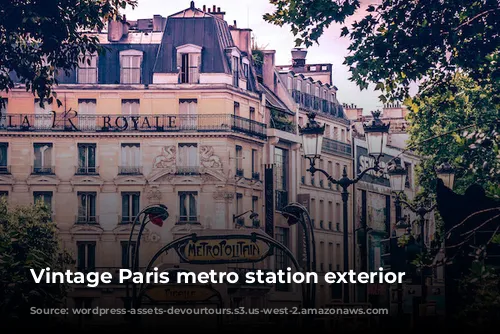
Navigating the Parisian Metro: Etiquette and Safety
While the metro is a bustling hub, it also has its own etiquette. Parisians tend to be quiet on public transport, rarely making phone calls or engaging in loud conversations. It’s best to follow suit, keeping your belongings hidden and your voice down to avoid drawing unwanted attention.
Avoiding Pickpockets
As with any large city, Paris has its share of petty crime, including pickpocketing. However, with a little awareness, you can stay safe. Keep an eye out for suspicious individuals who might be trying to distract you, such as girls with clipboards, people selling fake tickets, or groups of girls boarding the metro at the same time. These are red flags to be more vigilant about your belongings.
Navigating Stations and Accessibility
Most metro stations require walking up and down steps, as elevators and escalators are limited, making it challenging for those with luggage, disabilities, or strollers. However, many stations do have accessible entrances, so be sure to check for them.
Kindness on the Metro
Despite the challenges, the Parisian metro is a community space. Remember to offer your seat to elderly, pregnant, or disabled individuals, as others will do the same for you.
Staying Informed
On weekends, it’s wise to check your route on the official Paris public transport website, as some lines undergo maintenance and city map applications may not be up-to-date. Remember that not all train doors are automatic, so be sure to press a button or turn a lever to open them. And when the buzzer sounds, it’s time to hop on or off before the doors close.
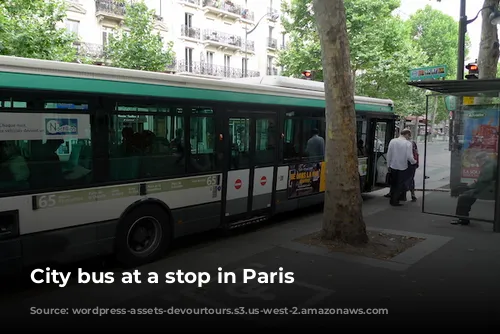
Traveling Beyond the City Limits: RER and Mainline Trains
For those venturing further afield, the RER, a metro-train hybrid, connects Parisian suburbs to the city center. While convenient, it can be complex, with lines splitting off to cover wider areas. Be sure to board the correct train, and don’t hesitate to ask a fellow passenger for help if you’re unsure.
Mainline Stations: A Hub of Activity
Mainline stations like Gare du Nord and Gare Montparnasse are bustling hubs connecting local suburbs to regional trains from all over France. Be extra vigilant in these areas, keeping your possessions close and wearing backpacks in front of you.
Long-Distance Travel: A Relaxing Experience
National and regional trains are generally quieter and often offer power outlets and USB ports, making them a great way to relax and unwind. If you’re planning travel within France, rail is a fantastic option, but remember to purchase tickets in advance to avoid higher prices closer to the date of travel.

Final Thoughts
Paris’ public transportation system is a fascinating world waiting to be explored. By following these tips, you can navigate the city like a true Parisian, unlocking its secrets and making your Parisian adventure a truly memorable experience. So, grab your ticket, explore the city, and enjoy all that Paris has to offer.
